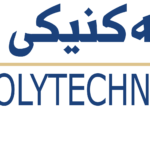- Omar Shirko Mustafa
- [email protected]
- 0750 363 3901
- 1-FINA~2
-
Quantum Key Distribution (QKD) represents a groundbreaking application of quantum physics for secure symmetric encryption key distribution. This method exploits quantum mechanics unique attributes, such as the no-cloning theorem and Heisenberg uncertainty principle, to create inherently secure keys resistant to
eavesdropping. However, the primary challenge is the exponential reduction in key distribution rates as distances increase. To extend the secure communication range of QKD networks, a Classic Trusted Relay (CTR) scheme has been proposed, introducing trusted intermediate nodes for enhanced security over distance. Nevertheless, concerns regarding trust requirements in relay nodes and communication channel reliability pose significant risks, potentially leading to CTR failures and overall system security compromise.
This dissertation presents a novel approach addressing CTR failure
challenges and optimizing generated key utilization. The solution integrates Software-Defined Networking (SDN) with QKD, capitalizing on SDN's flexibility and control for improved network management. SDN, dividing the network into control and data planes, offers unified management and programmability. To enhance QKD network resilience and reliability, the Software-Defined Quantum Trusted Relay Failure (SDQTRF) model is proposed. This model employs a new SDN controller function to effectively orchestrate QKD network operations. By incorporating SDN capabilities, the SDQTRF model enhances fault tolerance and the system's ability to recover from relay failures. The SDN controller actively monitors the QKD network, including relay node status and key distribution processes. Upon detecting a relay failure, the SDN controller responds proactively by reconfiguring the network through key recycling using Q-learning. If recycling fails, the controller reroutes the key distribution process through alternative paths determined by the Q-learning method. This proactive approach minimizes relay failure impact, ensures continuous key distribution, and preserves system security. To assess the SDQTRF model's effectiveness, extensive simulations were conducted on two distinct network topologies: the National Science Foundation Network (NSFNET) and the United States network (USNET). Simulations utilized a high-performance NVIDIA GeForce RTX 3060Ti GPU and ran on the Windows 11 operating system, which provided stability. To simulate the proposed SDQTRF model, JavaScript, PhP, and Python programming languages using NetworkX library were employed due to their flexibility and extensive libraries for scientific computing and network simulations. Simulation results indicate significant improvements, including a substantial increase in the key generation ratio, remarkable key utilization rate enhancement, impressive recovery after failure rates, considerable reduction in the avalanche effect, and a lower service blocking rate due to SDQTRF model implementation. - Erbil Technical Engineering College
- Information System Engineering
- Quantum cryptography


